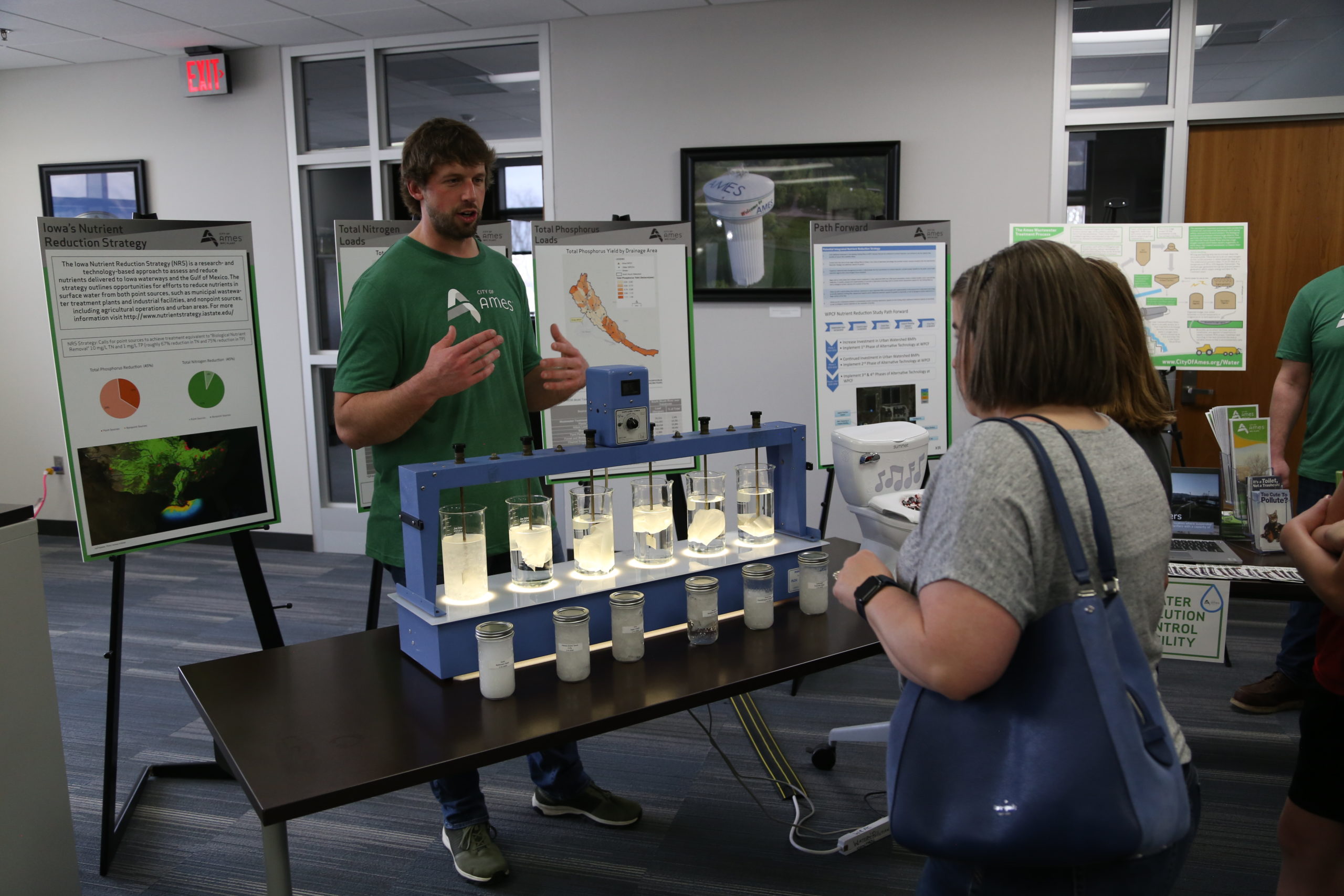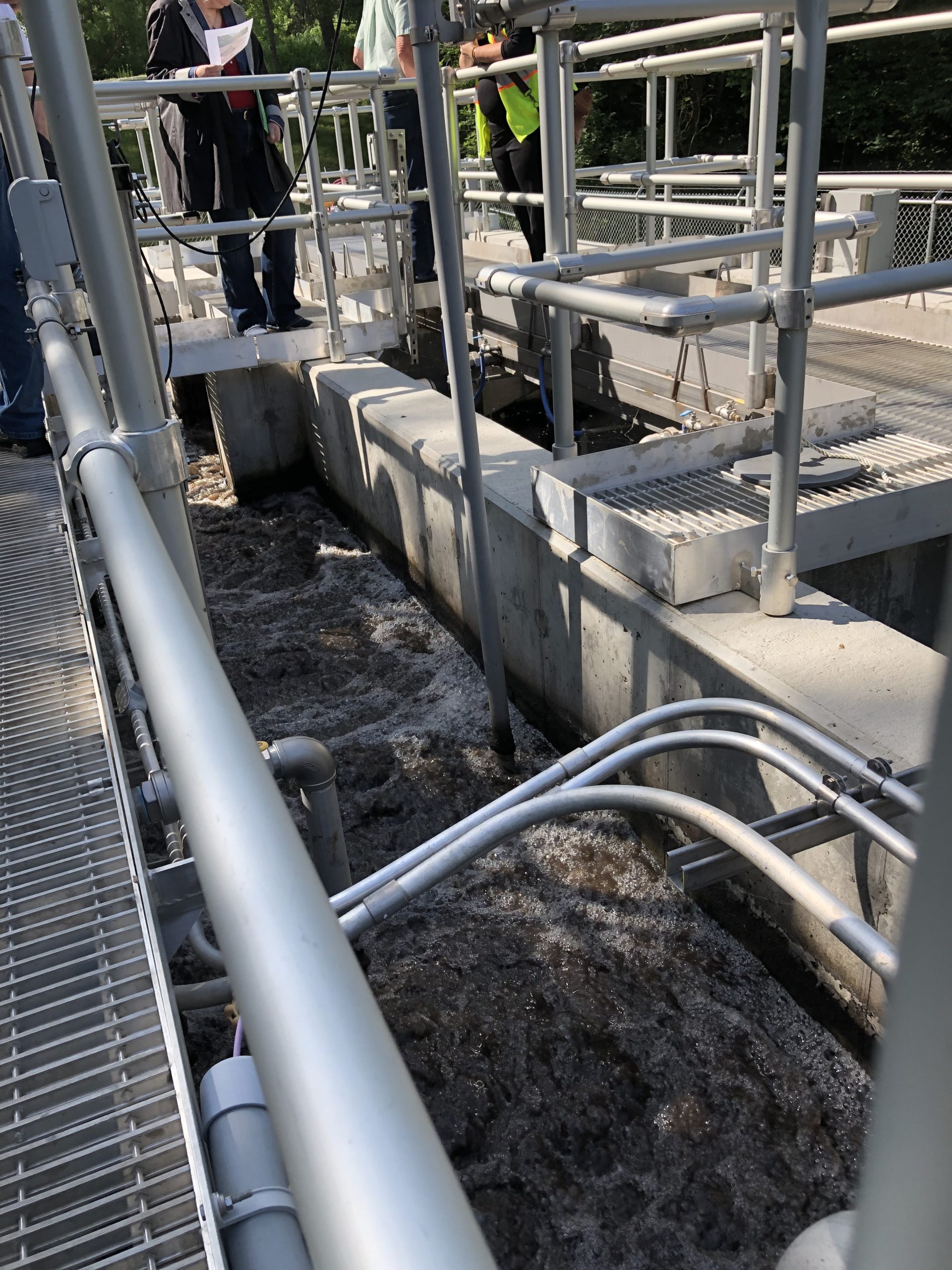
Appreciating Water and Wastewater Workers
Water and Wastewater Workers of Iowa Week!
In August the governor issued a proclamation recognizing these essential workers. I’ve had the privilege to get to know some of the folks who make sure the water in the tap is clean enough to drink, that the wastewater we flush doesn’t contaminate rivers, and that the storm sewers drain the streets without causing downstream flooding or pollution.
Sure, these kinds of jobs can involve reading meters, reviewing construction documents, doing inspections, and testing water quality. But it can also involve live-trapping turtles to stop them from damaging an expensive baffle curtain in a wastewater treatment lagoon by sitting on it (Tim Mattingly, City of Gilbert). It can involve handing out rubber duckies and demonstrating a flood model for kids at a school science night (Liz Calhoun and Jake Moore, Ames Public Works). It can involve taking time out of a busy schedule to attend meetings about watersheds and water monitoring (thanks to staff from Ames, Gilbert, Nevada, Roland, and Huxley who have come to mine). And it can involve canceling that meeting and rushing to the sewage treatment plant to help contain a spill when a valve breaks (this happened once to Ashley Geesman and Neil Weiss, Ames Water & Pollution Control).
I’ve been getting even more appreciation for wastewater treatment plants and the people who run them as I’ve researched and filmed Facts 31-35 of our weekly video series, “The Clean Water Act: 50 Years, 50 Facts.”
At a basic level, sewage treatment involves harnessing microbes to break down organic matter that would otherwise consume the oxygen in the water as it decomposes, and improving water clarity by allowing the solid material to settle out. Widespread secondary treatment of wastewater has taken care of some of the worst pollution that was affecting America’s rivers when the Clean Water Act was passed in 1972. But processes aimed at TSS (a metric of water clarity)and CBOD5 (a metric of oxygen consumption) doesn’t always get various forms of nitrogen (nitrate and ammonia), phosphorus, E. coli bacteria, or chloride down to an acceptable level. We’ve seen that in some our water monitoring results.
However, communities in Iowa continue to invest in improvements to their sewage treatment systems. NPDES permits have to be renewed every five years, and additional requirements come into play when a facility is renovated to increase capacity or replace deteriorating infrastructure. Some examples from the South Skunk River watershed include:
- The City of Nevada is building a new plant (to be completed in 2024) that will include systems to remove additional nitrogen and phosphorus. Ames, Oskaloosa, and Newton also are planning nutrient removal systems.
- The City of Ames spends over $3 million each year to repair or replace aging sanitary sewers.
- The City of Gilbert installed an extra stage to better treat ammonia during the winter months.
- A homeowner’s association near Gilbert is switching its water source to reduce the need for water softeners and the chloride (salt) pollution that comes with it.
- Over the last decade, UV disinfection systems to address fecal bacteria have been installed in sewage treatment plants in Ames, Newton, Story City, Huxley, Roland, Gilbert, Cambridge, and a neighborhood association. Colfax uses chlorine disinfection. Oskaloosa, Maxwell and Nevada have upgrades in the works.
However, if non-point sources of pollution like agricultural runoff and stormwater aren’t addressed, cities and towns reach a point of diminishing returns where sewer rates are going up but water quality in the river isn’t getting noticeably better. That’s why it’s exciting to see more water utilities breaking out of traditional silos and partnering with farmers on conservation projects in their watersheds.
(Edit 2023-12-29: The numbers I was using are potentially confusing and not relevant to the point I was making, so I have deleted them. According to models used for the Iowa Nutrient Reduction Strategy, point sources of pollution like wastewater account for 5% of the nitrogen load and 12% of the phosphorus load during the 2006-2010 benchmark period. The South Skunk River as a whole has a similar breakdown, but the stretch between Ames and Colfax has a higher percentage of pollution from point sources.)



